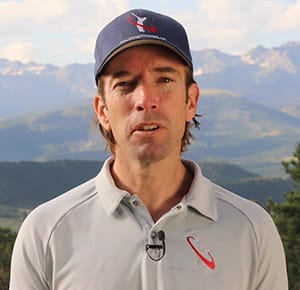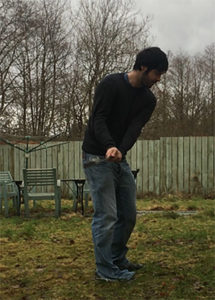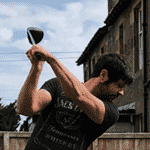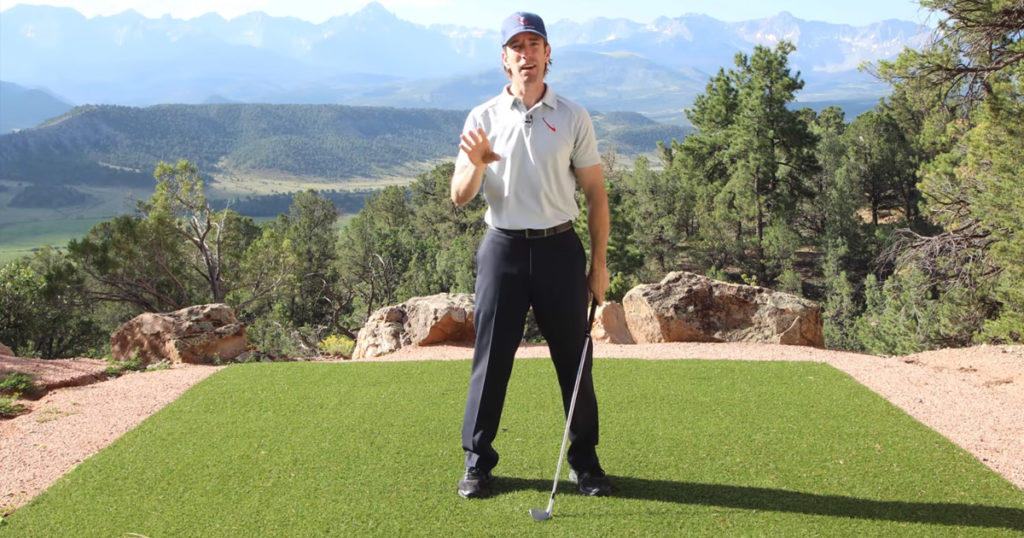In the third part in our series on the best online golf instructors, we take a look at Rotary Swing, and the swing philosophy of Rotary Swing’s founder Chuck Quinton.
Why You Can Trust This Rotary Swing Review
While not a current member of the site, I was a paid member of Rotary Swing back in 2017.
Here’s my email receipt, and welcome email:

I also purchased a video swing review:

The videos have been updated since then, and they have tweaked the program into what they are now calling the “DEAD Drill Learning System”. But the core of their swing philosophy remains the same.
Did Rotary Swing help my game?
In a word: yes.
After working through their drills for a couple of months I was very happy with how my game was progressing.
But unfortunately in April that year I suffered a (non golf related) hip injury that kept me off the course for around 4 months.
Which is why I let my membership lapse at that time.
Although while writing up this review, I realised I should probably sign up again…
Let’s dive in.
What Is The Rotary Swing?

Rotary Swing was founded by Chuck Quinton, a former Teaching Professional at Castle Pines Golf Club in Colorado.
On their YouTube channel, they claim to have been around since 2005, although the earliest version of the site I can find is from 2006.
But let’s not quibble about a year. Either way, Rotary Swing has been around for a long time. And there’s no doubt that Chuck and the team have helped tens (or even hundreds) of thousands of golfers (including me) over the years.
There are a TON of glowing reviews on their testimonials page. And they claim to have a whopping 350,000 members.
They release plenty of free instructional videos on their YouTube channel, while their site has a mixture of free and members only content.
What’s Rotary Swing’s Method?
Rotary Swing takes a biomechanical approach to the golf swing, aiming to teach a simple, repeatable, and safe swing, by focusing on core movements.
There are a few keys:
1. Pulling vs Pushing
Your swing should be primarily a “pulling” motion as “pushing” interferes with the arc.
You pull the club back (specifically with the right shoulder), then pull it through with the left side on the downswing.
2. The Inside Drives The Outside
Chuck (and the rest of the Rotary Swingers) believe that the inside drives the outside.
Small movements by individual muscles (or areas of the body) can move the club a long way.
For example, a 2 inch move by the right shoulder will move the clubhead 6 feet (more on that later).
And these small movements are easier to control/repeat.
3. Things Move In The Opposite Direction
To move the clubhead to the left (away from the target), you pull your trail shoulder to the right (towards the target).
On the downswing, as the clubhead swings towards the target, your lead shoulder is pulling (or rotating) away from it.
4. They Like Lag
They believe in creating and maintaining leverage to generate power.
And you’ll hear Rotary Swing instructors talking about lag a lot.
Whether that’s a good thing or not… is up for debate.
Many teachers, such as Monte Scheinblum, argue that lag is a bi-product of a good swing, not something you should be deliberately trying to create.
But there’s no doubt having lag in your swing is a good thing, so perhaps it’s more a question of semantics rather than who’s right or wrong.
5. They’re Big On Setup
They have some great instructional videos on setup and balance.
And to be honest, even if you don’t run with the rest of their swing method, these are worth the price of the subscription alone.
As no matter how you swing the club, a good setup is a fundamental.
6. It’s Very Technically Focused
Overall, the Rotary Swing is very technically focused.
You’ll learn about individual muscles to activate (and when), positions to hit etc.
Which is pretty much the exact opposite of an instructor like Shawn Clement who teaches the swing as one flowing movement, focussing on intents rather than positions.
Which brings us to the question:
Is The Rotary Swing Right For You?

I saw improved consistency and distance while working through the program.
In particular, I’ve never hit my driver as well as I did when I was using the Rotary Swing. And I remember at one point, just before I got injured, thinking for the first (and probably only) time in my life “golf is easy”.
I’d been out in the morning playing a stableford comp and hit my record points haul (45). It was the winter league, so I didn’t get cut!
High on confidence, I went out for a casual 9 holes in the afternoon with my buddy (same course), and the game just seemed ridiculously simple.
No doubt the golf gods decided that this wouldn’t do at all, so the next weekend I picked up my hip injury (playing football) that put me out of the game for the entire Spring!
If you’re someone who likes technical instruction, and is prepared to work through drills (many without a club), to build your swing over time, then I highly recommend it.
So, yeah, I can say with confidence that Rotary Swing will improve your golf game.
But whether it’s right for you is going to depend on how you prefer to learn.
If you’re someone who likes technical instruction, and is prepared to work through drills (many without a club), to build your swing over time, then I highly recommend it.
But if you prefer a more holistic approach to the golf swing, then an instructor like Shawn Clement will probably be more up your street.
What Is Rotary Swing’s Most Popular Video?
If you want to commit to the Rotary Swing fully, you’ll need to become a member to access the full course of instructional videos.
As it’s really a ground up, full swing overhaul.
But with that being said, they do have lots of free content if you’re looking to be a little more piecemeal, or some quick fixes.
Their most popular video also happens to be one of their oldest.
It’s this one from September 2006, which analyses Tiger Woods’ swing and impact position.
Since Tiger has changed his swing multiple times since then (this would have been his Hank Haney swing), it’s a little out of date. But it’s still worth a watch.
And don’t worry, their production values have improved since then!
Rotary Swing’s Best Videos And Drills
Rotary Swing have a ton of great videos and drills on their YouTube channel. Here are some of my favourites.
1. Right Shoulder Blade Guide
Without doubt this is my favourite individual piece of instruction from Rotary Swing. And it’s a move I still use to this day.
Start your takeaway by pulling your right shoulder back 2 inches.
That’s it.
The club will move to the perfect position, you’ll remain connected, and most importantly, it’s easy to repeat.
And as I’m sure you know, the takeaway is one of the most important parts of the golf swing.
Take your club away on plane, while keeping your arms synced with your turn, and your swing will be off to the perfect start.
This move was a game changer for me when I first tried it out.
2. The 9 To 3 Drill
This is a great video where Chuck Quinton works on the 9 to 3 drill with one of his students.
Even if you’re not working on the Rotary Swing, the 9 to 3 drill is a great way to practice the key area of any golf swing (i.e. the impact zone).
If you can perfect your swing from 9 to 3, then it’s really just a case of adding a little more shoulder turn on the backswing to get you to the top, and swinging through to a full finish on the downswing.
And you can actually punch your way round the course pretty effectively just by swinging 9 to 3.
3. Proper Weight Shift In The Golf Swing
In this video Rotary Swing instructor Chris Tyler explains how to correctly shift your weight in the golf swing.
If you’re someone who struggles with swaying off the ball rather than rotating, then this will be the perfect video for you.
4. Eliminate Early Extension
Rotary Swing have quite a few good videos on early extension.
This one not only explains what causes it (and how to fix it), but also gives a good overview of many of Rotary Swing’s key concepts.
Chuck contends that early extension is caused by too much pushing from the right side on the downswing, which causes you to lose posture and stand up. He also mentions the idea of parts moving in the opposite direction.
5. Never Shank The Golf Ball Again
In this video, Rotary Swing instructor Chris Tyler runs through 3 drills to work on if you suffer from the shanks.
The main focus is correct rotation of the club through the impact zone, and avoiding thrusting towards the ball (early extension).
Ready To Give Rotary Swing A Try?
Whether you’re a beginner golfer, or just looking to create more power and consistency in your swing, Rotary Swing will give you the drills and advice you need.
It’s the most popular online golf instruction system on the web for a reason: it produces results.
And even better, the biomechanics behind Rotary Swing will ensure that you’ll avoid injury on the golf course.
If you’re ready to build a safe, repeatable, efficient golf swing, then sign up here.

